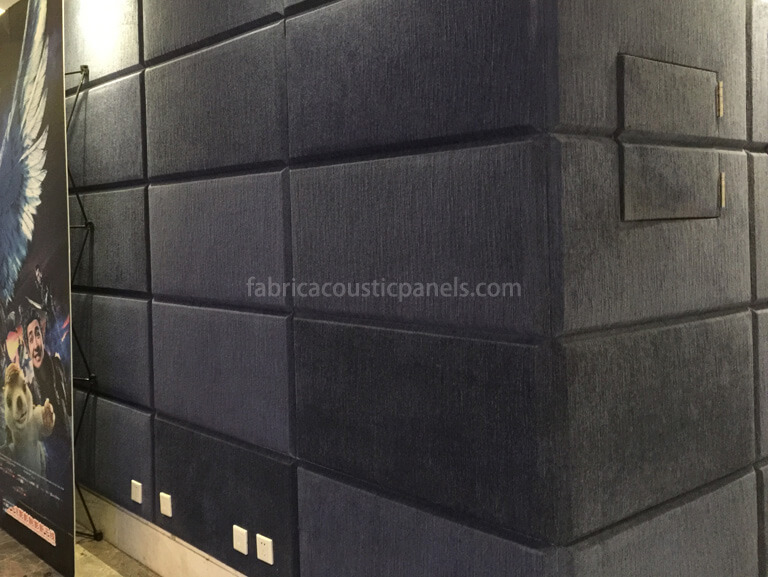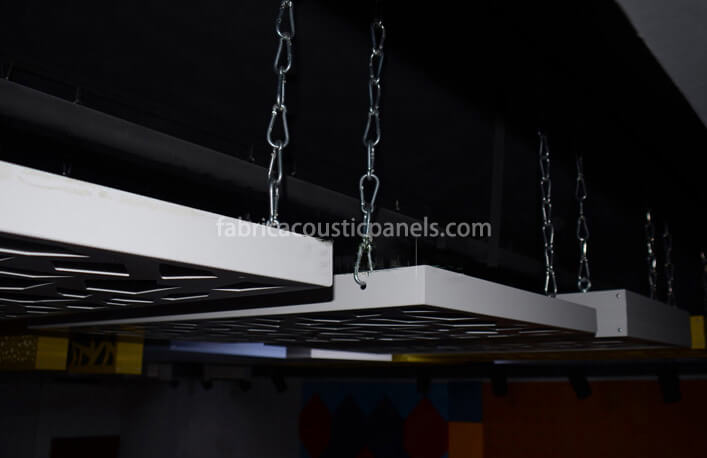Fabric Acoustic Panels Manufacturer

Q: Why is it helpful to absorb the sound?
A: The length of time required for room sound reverberation to die off is called the RT value of the room. RT stands for reverberation time. In an untreated sound control room, the RT60 value can carry 10 seconds or more. The problem is that the human ear can tolerate only 1.5 to 2.0 seconds of sound reverb. Beyond this level, sound reflection becomes blurred, competing with new sound signals, and provides unhealthy levels of so-called “background noise”.
Q: How many acoustic absorption materials do I need in my room?
A: Different projects have different requirements on reverberation time. We can offer suggestion if you tell us the project name, function, and room size.
Q: Is the 25mm or 50mm thickness acoustic absorbing material the best for me?
A: The answer depends on three things:
Budget: 25mm panel costs less both on product cost and shipping.
Purpose: Different projects have different required reverberation time.
Preference: Some people like the appearance of thinner acoustic absorbing material on the wall, some people do not like. Some people like to “go the best”, just for safety reasons.
Q: Can I order a custom size panel to suit my situation?
A: Yes, we can provide our 25mm or 50mm thick panel custom sizes.
Q: Does your acoustic absorption materials generate dust or fiber in the air?
A: We found that we used to cover the fabric of the panel is doing well, can prevent dust or fiber escape. You can also use vacuum cleaner do clean the panels.
Q: How do I install acoustic sound absorber panels on a ceiling?
A: For our standard fabric acoustic absorption materials, we recommend to put it on T-bar. If you don’t like the T-bar style. We can customize the panel with a 3mm thick plywood or MDF. Then you can drill small holes on the plywood and pass the screws through the holes and into the ceiling (preferably joists or other solid structures). The suspended acoustical ceiling panel’s frame is sturdy and will support the screws without problems. If you are using drywall ceilings, make sure to use something suitable for dry wall anchors somewhere on the dry wall. Of course, no matter what method you choose, use common sense to ensure that the panel is securely connected.

Q: Can I have solid wood back on the fabric acoustic absorber panels?
A: Our standard panel is resin frame without wood back. Yes, we can also customize the back with wood back.
3mm or 6mm wood back provides strength for the panel, and can hang fabric acoustic panel on the wall, or install hardware such as hinges, hooks or other hangers.
In the acoustics, the solid back on the wall and the panel is roughly the same, not back to the wall. In either case, the sound enters the front of the panel, is reflected by the back and / or walls.
Besides, if you want to absorb the bass and want to have an air gap behind the panel, then the back is not desirable. This air gap allows the sound to pass through the panel, has a certain distance in the air gap, reflected from the wall, passes through the air gap and passes through the panel. The distance helps to absorb low frequencies (because they have long wavelengths).
Q: How does mineral wool differ from fiberglass absorbent materials?
A: The difference is very small. Mineral wool is made of basalt rock, melted and spun into wool. Fiberglass wool is made of silica (glass), melted and spun into wool. Mineral wool has a high melting point, but there is no impact on the acoustic properties. Similar densities of mineral wool and glass fibers have almost the same acoustic properties.
Q: What is your policy for art acoustic absorption materials?
A: We must receive an artwork from all the art panels and make your approval by the customer within 7 days of the order, unless otherwise made in advance. Once their production starts, the art fabric wall hangings are not refundable.